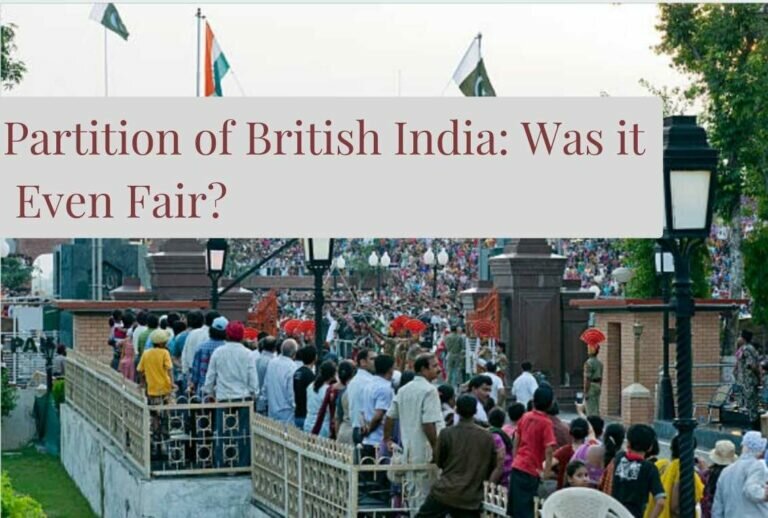Nuclear Politics in South Asia
Southern Asia is an area of the continent Asia, which is home to three nuclear powers. The world knows about these three nuclear powers China, Pakistan, and India. Their nuclear abilities continue to modernize and expand in numbers. To reduce their respective security threats, each is trying its best to expand missile-based delivery systems. The hostility between two neighbors India and Pakistan characterizes nuclear politics and the strategic culture of South Asia. The nuclear competition in the world is increasing mistrust between countries. Furthermore, there is a dearth of diplomacy to reduce the risk of confrontation. Ongoing threats by militants and political instability in Pakistan have focused a specific concern for Pakistan’s nuclear arsenal.
China – A Nuclear Giant
China’s Nuclear Capabilities
China is one of five countries that has achieved a complete nuclear triad. The nuclear triad refers to nuclear delivery capabilities on land, air, and sea. According to Reuters, China has more than 400 warheads currently. Furthermore, according to an estimation by Pentagon, China is going to have 1500 nuclear warheads by 2035. China’s nuclear warheads include Short-range ballistic missiles, Medium-range ballistic missiles, Intermediate-range ballistic missiles, Submarine-launched ballistic missiles, Inter-continental ballistic missiles, and Land attack cruise missiles. Each warhead has its respective estimated range.
How did it start? and How it is going?
Beijing started its nuclear path after Korean War (1950-1953). Furthermore, US nuclear threats during the Taiwan Crisis in the 1950s motivated China’s strategic nuclear program. China conducted its first nuclear test in 1964 and its first hydrogen bomb test occurred in 1967. Tests continued until 1996 when china signed CTBT (Comprehensive Test Ban Treaty). Subsequently, China signed other treaties also like BWC and CWC. It modernized its nuclear arsenal after its economic boom which was also motivated by the US. And it is still continuing.
China is expanding its nuclear arsenal as well as changing the composition of its nuclear forces to develop more mobile systems. China’s missile technology has gained pace and improved too much extent.
Also Read: Nuclear proliferation and Nuclear Security – Explained
China’s Nuclear policy
China claims that its nuclear ability is purely defensive in nature. Since its first test in 1964, it has same policy today. It is the only country out of five NPT signatories, that has given assurance to non-NWS in the whole world. China signed NPT in 1992. Since that time, it has clearly announced that under any circumstances it will never use any nuclear arsenal against the Non-nuclear Weapon States. Furthermore, for Nuclear Weapon States, China has declared ” a no first use” policy. In 2005, the foreign ministry of China released a White Paper regarding this statement. It told that China would not be the first to use weapons (nuclear) at any time, in any circumstance.
Its policy includes that it stores its nuclear warheads separately, not with the launching system. It does until a serious threat poses. China convinced all NATO members except the Netherlands and all NWS not to sign the UN treaty of prohibition of Nuclear Weapons. This treaty asked for the total elimination of nuclear arsenals.
In 2020, in the new START, nuclear arms reduction treaty, China rejected to join talks with Russia and the United States. Its position is that it is already in a reduced position than the US and Russia, so its reduction of nuclear weapons is completely unnecessary.

India – Another Nuclear Power
India’s Nuclear Capabilities
Nuclear Command Authority, a civilian command structure, controls India’s developed strategic nuclear program. It has nuclear aircraft and ballistic missiles. According to an estimation, India has almost 160 nuclear warheads. It is expanding and modernizing its nuclear capabilities. Furthermore, India has prepared enough weapons-grade plutonium for almost 200 nuclear weapons. India has achieved the nuclear triad. It has air-launched nuclear weapons, land-based ballistic missiles, and sea-based ballistic missiles. Its land-based ballistic missiles include short-range, medium-range, and intercontinental ballistic missiles.
How did it start? and How it is going?
In addition to developing a civilian nuclear energy program and, consequently, the potential to create a nuclear bomb, Nehru pursued a strategy of formally giving up nuclear weapons. A conventional weaponry advantage over its competitors, Pakistan and China, served as the driving force for this approach. In 1956, India constructed its first research reactor, and in 1964, it built its first plutonium reprocessing facility.
India’s nuclear program dates back to March 1944, and Homi Jehangir Bhabha created its three-stage technological endeavors when he founded the nuclear research center, the Tata Institute of Fundamental Research.
Also Read: Water Issues of Pakistan
India’s Nuclear Policy
Delhi, like Beijing, pledges an NFU (no first use) policy. It is in the process of developing a nuclear doctrine based on credible minimum deterrence. Manohar Parrikar, India’s defense minister, questioned the no-first-use policy in 2016 and questioned why India, a “responsible nuclear state,” should “bind” itself. India is not a signatory of NPT.
Later, he made it clear that this was just his personal viewpoint. Rajnath Singh, India’s defense minister, stated in 2019 that future “circumstances” may cause India’s no-first-use policy to change. The Ministry of External Affairs, however, reaffirmed India’s philosophy of “maintaining a credible minimum deterrence based on a No First Use (NFU) posture and non-use of nuclear weapons against non-nuclear armed nations” in a statement from January 2022.
Pakistan – The Only Islamic Country with Nuclear Power
Pakistan’s Nuclear Capabilities
According to an estimation in 2021 by SIPRI (Stockholm International Peace Research Institute), Pakistan has 165 nuclear warheads. The maximum range of Pakistan’s missiles is 2750 km which is Shaheen-III. There are two types of delivery vehicles Pakistan sustains aircraft and surface-to-surface missiles. The Strategic Plans Division (SPD), a secretariat of the National Command Authority, is the primary overseer of Pakistan’s nuclear weapons as well as its policy. Its head is a three-star general from the Pakistan Army. Moreover, despite Pakistan’s economic issues, it has modernized and developed its nuclear arsenal.
How did it start? and How it is going?
The India-Pakistan war of 1971 caused to loss of 150,000 km2 of the area of Pakistan. This motivated Pakistan to initiate its nuclear journey. Pakistan started its nuclear path in January 1972 under the leadership of Prime Minister Zulfiqar Ali Bhutto. He made a meeting in Multan on January 20, 1972. This meeting is commonly known as the “Multan Meeting“. He pledged to this program by creating PAEC (Pakistan Atomic Energy Commission). Besides, he made Munir Ahmad Khan its chairman.
According to his estimations, Pakistan would have been nuclear power by the end of 1974. Dr. Abdul Qadeer Khan joined this nuclear program in 1974 at the behest of Zulfiqar Ali Bhutto.
Pakistan did its first nuclear test on 28 May 1998 and then 6 tests were conducted back to back till May 30, 1998. The first five tests were conducted on Ras Koh hills in Chagai, and the last one was conducted in the Kharan Desert under the name of Chagai-II.
A think tank of Boston university claims that Pakistan continues to increase the capacity of Plutonium at the Khushab nuclear facility. Pakistan’s last test of the explosion was made of tritium material. Moreover, it was designed to be carried out by vessels, missiles, and aircraft. Only a few grams of tritium can result in an explosive to 300% or 400%. To summarize, Pakistan has developed and modernized its nuclear arsenal to much extent.
Also Read: Is the UN really Successful or Not?
Pakistan’s Nuclear Policy
National Security authorities cite Pakistan’s nuclear doctrine as “restraint” and ” responsibility” as pillars of Islamabad’s nuclear program. A US-funded non-partisan Congressional Research Service claims something about it. According to this research service, Pakistan’s nuclear program objective is to deter external aggression, stabilize strategic deterrence in South Asia, and counterforce strategies.
The hostility between India and Pakistan is a central driver for Pakistani nuclear development. Moreover, Pakistan is not a party to NPT and is not bound by any provisions. However, in Lahore Declaration, India and Pakistan both pledged to agree on a bilateral moratorium on further nuclear testing. This decision was taken after one year of nuclear testing in 1998.







